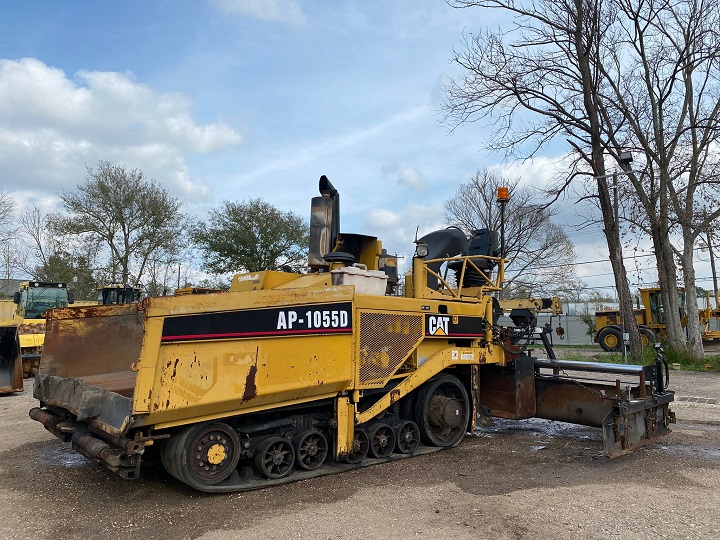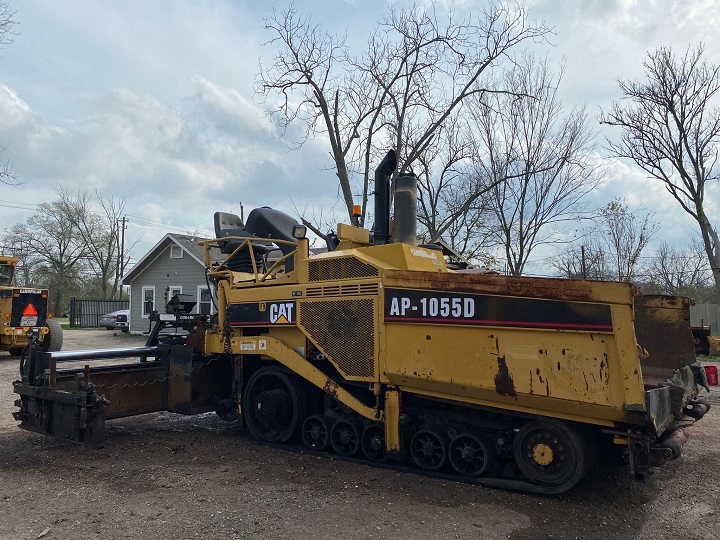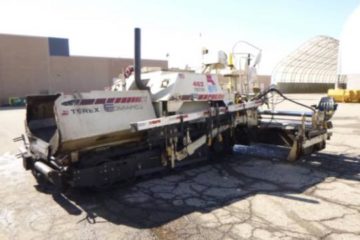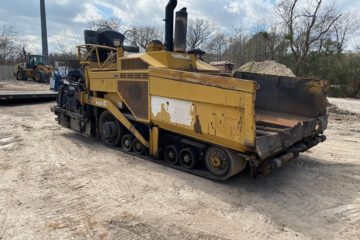Uses and types of asphalt pavers
Asphalt pavers are one of the major types of construction machinery. This equipment is famous for spreading asphalt on streets, spans, parking garages, and other comparable areas due to its operating system. Asphalt is the most versatile sort of clearing material. It is additionally the most frequently used, utilized, and reused asphalt material. An asphalt paver is great for clearing a parking area, repaving a carport, or filling a pothole in the street.
Uses of Asphalt Pavers
Asphalt paver operations and uses make it one of the top types of construction machinery. Because it is actually robust and works effectively under heavy traffic situations, asphalt pavers are used to clear the majority of streets across the world. It provides consistent performance and durability in a wide range of temperature and environmental conditions. Asphalt paver It is also widely used in the modern world for a variety of reasons, including the construction of air terminals and the base course of railroad lines, as well as the creation of designs and tunnels.
The majority of big bridges in most European nations have asphalt paver asphalts on top. One of the primary reasons asphalt paver is used as a surface material is to protect steel and large structures from de-icing salts and water.
Asphalt pavers combinations have been shown to be the ideal solution for many components of outstanding rail line constructions. The use of asphalt paver, specifically, in the development of the tracks’ superstructure, which includes rails, sleepers, latches, weight, and the sub-counterweight layer, has demonstrated that these types of developments have completely met the requirements required to build the advanced rail line framework.
The asphalt pavers are loaded into the paver’s container by a dump truck or a material transfer machine. The asphalt paver was transported from the container to the drill by the carrier. The auger positions a material stack before the tirade. The tirade spreads the material from the store across the width of the street and gives introductory compaction.
Behind the tirade, the paver should give a smooth, steady surface. A free-drifting tirade is utilized to produce a smooth surface. It is towed toward the finish of a long arm, which reduces the impact of the base terrain on the last surface. The stature is not entirely set in stone by a variety of components, including the tirade’s charge point, weight and vibration, material head, and towing power.
Advanced pavers use mobilized tirade controls to adjust to rising changes for the last level of the street. These controls typically change the tirade’s approach in light of data acquired from a grade sensor. Extra controls are utilized to direct the finished asphalt’s slant, crown, or super-elevation.
To guarantee a smooth surface, the paver should move at a consistent speed and keep a ceaseless store of material before the tirade. Expanded material reserve or paver speed makes the tirade rise, bringing about more asphalt pavers being put and a lopsided last surface. An abatement in material or a reduction in speed, then again, will make the tirade fall and the mat to be more slender.
Different uses for asphalt pavers are negligibly considerable, despite the fact that they are nevertheless significant in construction and open-air settings. In its liquid condition, asphalt paver is used to waterproof structures and surfaces, just as private material shingles. Because of its numerous contemporary and sporty uses, blacktop is an excellent choice for a wide range of construction projects.
Types of Asphalt Pavers
Asphalt pavers are grouped into two classifications, which project workers typically pick in view of their necessities. The conditions you work in and the length of the area you really want to cover are two contemplation that may assist you with picking the right gear for your exercises. Whenever a business looks for heavy equipment for sale for pavements, they look for these two types.
Tracked Pavers
Tracked pavers are preferable over wheels on softer surfaces due to their grip and lightweight. These devices are more stable and can generally turn in less area than a wheeled paver. Track pavers shine when it comes to pushing end dumps. When the truck’s mix is put back into the paver’s container, the vehicle will mostly drive away; so, the transporter should use slowing down the ability to stay connected. When using a track paver, the whole load from the material and the truck rests on top of the tracks, increasing the paver’s dynamic effort. If you add 10,000 pounds of weight to the container, the machine will have better footing and will push much harder.
In damp or sandy circumstances, for example, a track paver may be the ideal solution for chipping away at a softer surface. Indeed, even in tight turns, these bicycles provide great strength and solid handling. When a track paver is fully piled, it adds weight to the track, improving grip and making it suitable for steep inclines or harsh applications.
Tracked pavers can work in more situations than wheeled pavers. The tracks are suitable for almost any asphalt condition. Furthermore, tracks can handle larger spans of clearance better than automated pavers. This is especially important in commercial operations because a large area must be removed at the same time.
In general, clearing operations for new surfaces will surely benefit from the use of a track paver. This hardware can flawlessly clear while also providing the security required to effortlessly organize an unbalanced or fragile landscape. Tracked pavers are excellent for new construction locations, and that is why they are the most searched, heavy equipment for sale.
Wheeled Pavers
Tracked pavers are designed for new surfaces, whereas wheeled pavers are designed for use on existing surfaces, such as plant and fill applications and overlays where footing isn’t as significant. Wheeled pavers are perfect for situations when the administrator has to transport the equipment without the use of a trailer. Because the wheeled paver has the fastest travel speed, it is the obvious choice for the worker for hire in terms of reducing travel time to/from the genuine assignment beginning/finishing place.
The major advantage of wheeled pavers is their low cost. They are basically less expensive than the pavers that came before them. Furthermore, they require less maintenance, resulting in lower support expenses. Another cost-cutting approach is that wheeled pavers are less expensive to work in a particular location.
Conclusion
At Mico, we offer the widest range of reliable manufacturers of heavy equipment for sale, from asphalt pavers to road rollers. Visit our website for further assistance.



